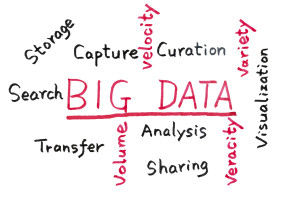 Traditionally, the staffing sector has always been heavily reliant on personal perspectives and human judgment. From the process of hiring new members of staff to performance reviews and staff retention, human interaction is fundamental. However, the benefits of computer generated algorithms, statistics or, as it is more commonly known these days, big data, are increasingly being brought to the forefront of the HR agenda.
Traditionally, the staffing sector has always been heavily reliant on personal perspectives and human judgment. From the process of hiring new members of staff to performance reviews and staff retention, human interaction is fundamental. However, the benefits of computer generated algorithms, statistics or, as it is more commonly known these days, big data, are increasingly being brought to the forefront of the HR agenda.
There is no question that big data has an effect on every line of business across the U.S. It has been estimated that globally we create 2.5 quintillion bytes of data every day. All of this data is often useless as it is not being utilized for business benefit – something HR departments are also guilty of. At the moment, there are not enough recruiters using the data they accrue on what’s happening in the wider market. Some will be having as many as 50 interactions with candidates every single day, most of which will reveal snippets of information on their competition. Those snippets might involve anything from business strategy to compensation drivers, innovation to talent mapping. The key is in harnessing that information and using it in two ways: both as a way of giving the wider business intelligence that it can use to shape its own strategy, and then packaging it up as a way of differentiating from the competition when it comes to recruitment.
PREMIUM CONTENT: Trends in labor arbitrage
Here are three of the top problems HR departments face and how big data can help to solve them:
- “The way we monitor staff progress isn’t working.” Investing in staff is crucial to the success of any company. However, retaining these skilled recruits can often prove a challenge. From day one, as staff progress, various statistics should be recorded, ranging from targets achieved to time of service. HR departments can use this data to ensure staff are promoted at the right time and also rewarded for their progress. This helps in keeping employee engagement high and also adds an element of objectivity into employee development.Skills can often be overlooked and gaps can appear. Those with inadequate training or individuals who simply require a refresher can be highlighted through HR statistics. Ensuring data is used in the most beneficial way can therefore boost internal learning and development.
- “We struggle to find the highly talented recruits we need to remain competitive.” Sourcing and onboarding top talent can often be a lengthy task, but is essential to remaining competitive. Data can help HR departments to highlight the positions that are needed and also the requirements needed to effectively integrate into the team as quickly as possible. As well as assisting in searching out new candidates, data can also help to ensure the boat is not missed with previous applicants. Although they may have been overlooked for a role in the past, storing full details on previous applicants, such as skills and experience is recommended. It will help to align candidates with suitable upcoming roles and will also dramatically speed up the interview process.
- “The infrastructure we have is ineffective when it comes to collating valuable data.” Getting your bits and bytes in order is made much harder when the internal systems are not up to scratch. Most companies have mountains of data coming from disparate systems that must be aggregated into a logical format for real decision making. Unlike the U.S. accounting profession, which has standardized measurements under GAAP (Generally Accepted Accounting Principles), HR and talent management professions do not have a standard measurement principle. As a result, companies need to take the necessary steps towards educating themselves about what they should be measuring and what data is relevant to their particular business segment. A capable data management system will provide a solid foundation for utilizing big data.
The world of analytics is changing rapidly and the process of capturing and displaying data has become a basic building block in operating a sophisticated talent acquisition initiative. Capturing and displaying data is norm, what is evolving is how to use the data as a decision-support tool for businesses to make some fundamental business decisions based on the data inside its organization. Those that do will be successful in out-pacing their competition.









[…] Traditionally, the staffing sector has always been heavily reliant on personal perspectives and human judgment. From the process of hiring new members of staff to performance reviews and staff retention, human interaction is fundamental. […]